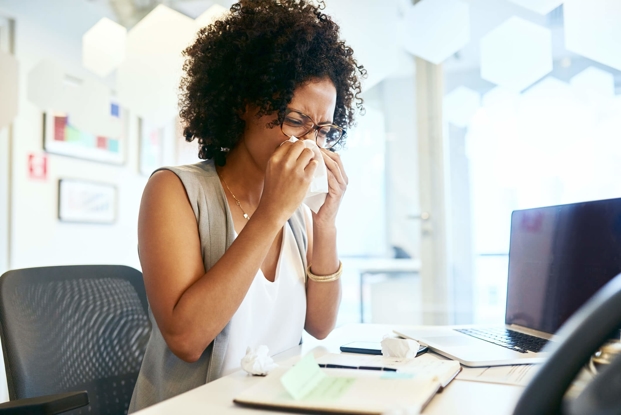Health Benefits of Foam Rolling
- Category: Living Well
- Posted On:
Exercise has the potential to induce fatigue in the musculoskeletal, nervous, and metabolic systems. Muscle soreness can be associated with exercise depending on the duration, frequency, intensity and type. After intense exercise, discomfort and pain occur due to the disruption of the muscle structure. This leads to prolonged impairment of muscle function and delayed-onset muscle soreness (DOMS).1 DOMS is highly variable ranges from muscle stiffness that subsides with daily activities to severe pain that restricts movement.2 The intensity of DOMS becomes apparent the first 24 hours post-exercise, peaks between 24 and 72 hours, and subsides in 5 to 7 days.3
Foam rolling is an effective method of reducing tension and increasing muscle length for either a pre-workout warm-up or post-exercise active recovery to minimize the adverse effects of DOMS. Foam rolling is done by an individual using their body weight to apply pressure to their soft tissues while performing a rolling motion. Common muscle groups that benefit from foam rolling include the quadriceps, iliotibial (IT) band, adductors, hamstrings, and gluteal muscles. Foam rollers are an excellent asset because you are able to improve recovery time from the comfort of your own home with an inexpensive ($30 or less) piece of workout equipment and a modest time commitment (20 minutes or less). Foam rolling or self-myofascial release is a popular intervention used to enhance an individual’s myofascial mobility, prevent DOMS, increase blood flow, and improve recovery time.
Pearcey et al determined the effects of either no foam rolling or 20 minutes of foam rolling immediately, 24, and 48 hours post-exercise.4 The study determined that foam rolling substantially improves quadriceps muscle tenderness by a moderate to large amount in the days after fatigue. It was additionally determined that sprint time, power, and dynamic strength-endurance improve with foam rolling.4
A short bout of foam rolling immediately pre or post-exercise may reduce muscle tenderness and the detrimental effects of DOMS. Self-myofascial release through foam rolling will benefit individuals seeking a recovery modality that is affordable, easy to perform, and time-efficient!
Click here to learn more about Touro Rehabilitation Center.
Click here for other exercises on releasing stress and tension in your body.
- Byrne C, Twist C, Eston R. Neuromuscular function after exercise-induced muscle damage: theoretical and applied implications. Sports Med. 2004;34(1): 49-69.
- Cheung K, Hume P, Maxwell L. Delayed onset muscle soreness: what is it and how do we treat it? J Sports Reabil 1996; 5(3):234-243.
- Armstrong RB. Mechanisms of exercise-induced delayed onset muscular soreness: a brief review. Med Sci Sports Exerc. 1984; 16(6):529-538
- Pearcey et al. (2015) Pearcey GE, Bradbury-Squires DJ, Kawamoto J-E, Drinkwater EJ, Behm DG, Button DC. Foam rolling for delayed-onset muscle soreness and recovery of dynamic performance measures. Journal of Athletic Training. 2015;50:5–13.
Barbara graduated from Louisiana Health Sciences Center New Orleans Doctor of Physical Therapy program in 2017. She currently participates in an orthopedic manual therapy fellowship through the Manual Therapy Institute (MTI). She works full-time at Touro Outpatient Rehabilitation Center on St. Charles Avenue.


